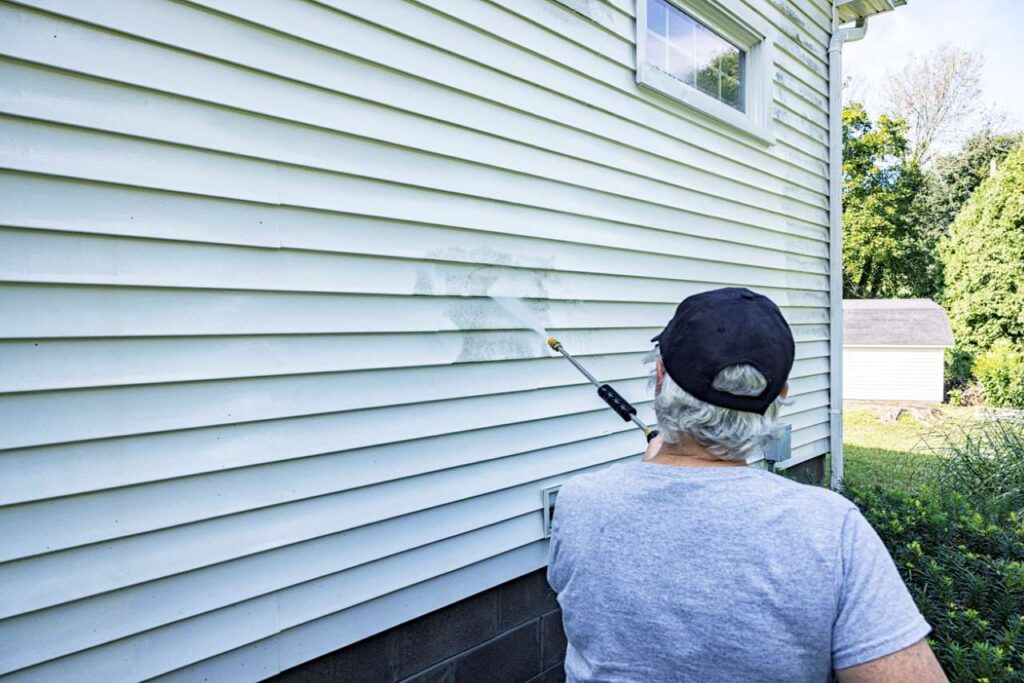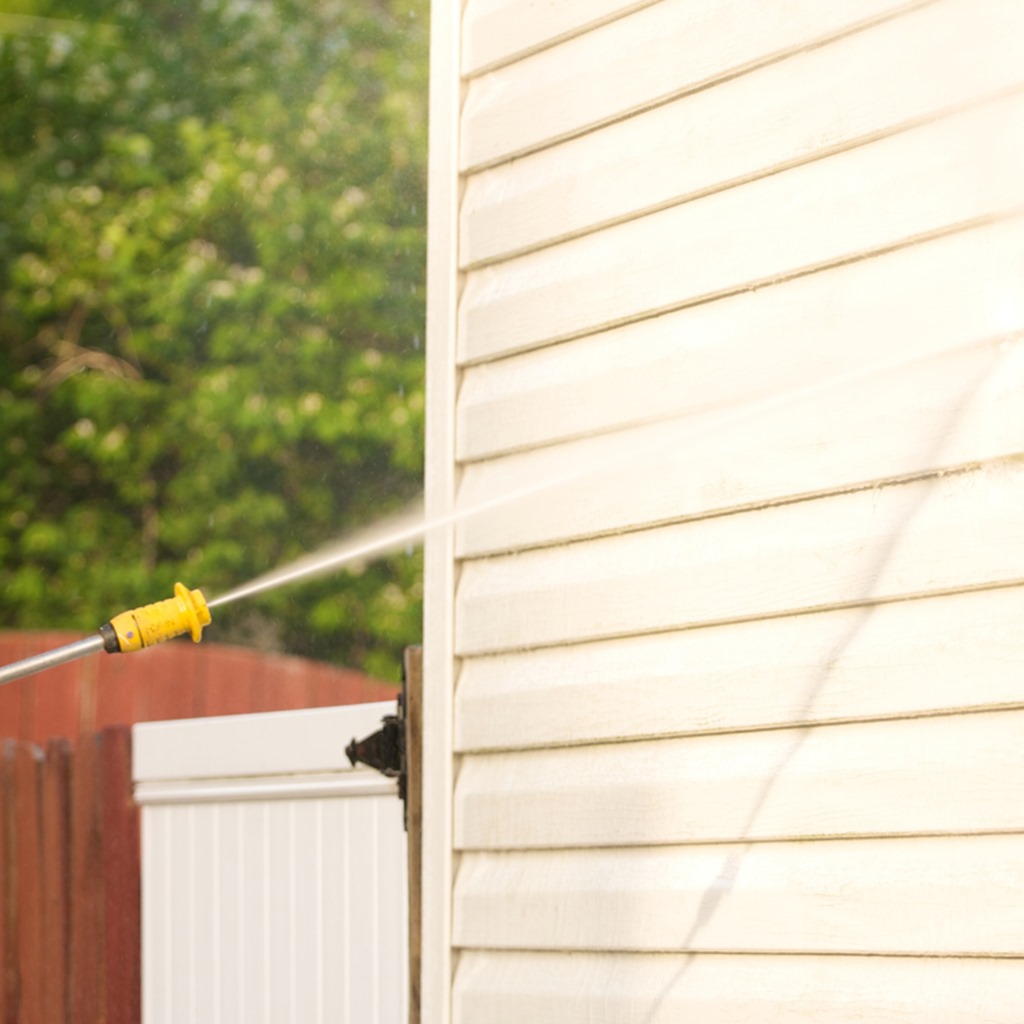Are you looking to give your home's exterior a fresh and clean look? Cleaning your house siding not only enhances its curb appeal, but also helps prolong its lifespan. So whether you have vinyl, wood, aluminum, or any other type of siding, our step-by-step guide will walk you through the process of maintaining a spotless home exterior. So, how to clean siding on house? Let's find out.
What are the Different Types of House Sidings?
Before we dive into the cleaning process, it's first important to understand the various types of house sidings you might encounter:
- Vinyl Siding: Known for its low maintenance and durability, vinyl siding is resistant to moisture and fading. At Rise Renovation, we specialize only in vinyl siding, considering it the creme-of-the-crop when it comes to durability, low maintenance, and ease of installation.
- Wood Siding: Elegant, wood siding requires more maintenance to prevent rot, mildew, and insect infestations.
- Aluminum Siding: Lightweight and rust-resistant, aluminum siding is easy to clean and typically low maintenance.
- Fiber Cement Siding: This durable siding material offers the appearance of wood without the susceptibility to rot and pests.
- Brick Siding: Sturdy and classic, brick siding requires minimal cleaning but benefits from periodic maintenance.
- Stucco Siding: Stucco is durable and fire-resistant but can accumulate dirt and stains over time.
Preparation for Cleaning
Step 1: Gather Your Supplies
Before you begin cleaning, gather the necessary supplies. You'll need a garden hose with a spray nozzle, a soft-bristle brush or mop, a bucket, mild detergent or specialized siding cleaner, safety goggles, and gloves.
Step 2: Inspect for Repairs
Next, inspect your siding for any loose or damaged sections; this is because it's essential to address any necessary repairs before proceeding with cleaning to prevent further damage.
Step 3: Protect Surroundings
Cover any delicate plants and shrubs near the house with plastic sheets to shield them from cleaning agents. Also, protect electrical outlets and fixtures to avoid water damage.
Step-by-Step Guide for Cleaning House Siding
Step 1: Dilute Cleaning Solution
Mix a solution of water and mild detergent or use a specialized siding cleaner, making sure to follow the manufacturer's instructions for the proper dilution ratio.
Step 2: Wet the Siding
Using a garden hose with a spray nozzle, thoroughly wet the siding from bottom to top, as this will help loosen dirt and debris.
Step 3: Apply Cleaning Solution
Dip your soft-bristle brush or mop into the cleaning solution and start scrubbing the siding from top to bottom, working in small sections to ensure a thorough cleaning.
Step 4: Rinse
After scrubbing each section, rinse it immediately with the garden hose. Begin at the top and work your way down to prevent streaking.
Step 5: Repeat if Necessary
For stubborn stains or heavily soiled areas, you may need to repeat the cleaning process. Avoid using excessive force or abrasive materials that could damage the siding.
Techniques and Tips for Effective Cleaning

- Pressure Wash with Caution: While pressure washing can be effective, use it sparingly and at a low setting to avoid damaging the siding or forcing water beneath it.
- Mold and Mildew: If you encounter mold or mildew, use a solution of one part bleach to four parts water for cleaning. Ensure proper ventilation and wear protective gear.
- Vertical Strokes: When scrubbing or rinsing, use vertical strokes to prevent water from getting behind the siding, which can lead to moisture-related issues.
- Avoid Harsh Chemicals: We wouldn’t recommend the use of harsh chemicals like undiluted bleach, as they can damage the siding's finish and color.
Post-Cleaning Maintenance
Once you've successfully cleaned your house siding, consider these maintenance tips to keep it looking its best:
- Regular Inspections: Periodically inspect your siding for any damage or signs of wear. Address issues promptly to prevent further damage.
- Annual Cleaning: Aim to clean your siding at least once a year to remove dirt, grime, and mold buildup.
- Trim Vegetation: Trim overhanging tree branches to prevent debris from accumulating on your siding.
- Professional Inspection: If you're uncertain about the condition of your siding or if it requires special attention, consider hiring a professional siding contractor to assess and address any concerns.
For professional siding services in the Colorado area, don't hesitate to contact us if you’re looking for a siding contractor in Denver. Our expert team at Rise Renovation is here to help you maintain and beautify your home's exterior all year round, with expert installation and only the highest-quality, American-made vinyl siding.
FAQs
How often should I clean my house siding?
The answer to this question depends on several factors, including the type of siding, your local climate, and the amount of dirt and debris it accumulates. In general, it's a good start to clean your siding at least once a year. However, some siding materials, like vinyl or aluminum, may require less frequent cleaning, while others, such as wood or stucco, may benefit from more regular maintenance. Additionally, if you notice mold, mildew, or heavy staining, it's best to clean your siding promptly to prevent further damage.
Can I use a power washer to clean my siding?
While a power washer can be a useful tool for cleaning siding, it should be used with caution. Using too much pressure or holding the nozzle too close to the siding can damage the material, force water behind it, or strip away paint and finish. Additionally, certain siding materials, like wood or stucco, are more sensitive to pressure washing and may require alternative cleaning methods.
